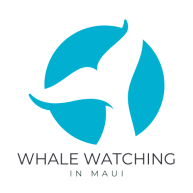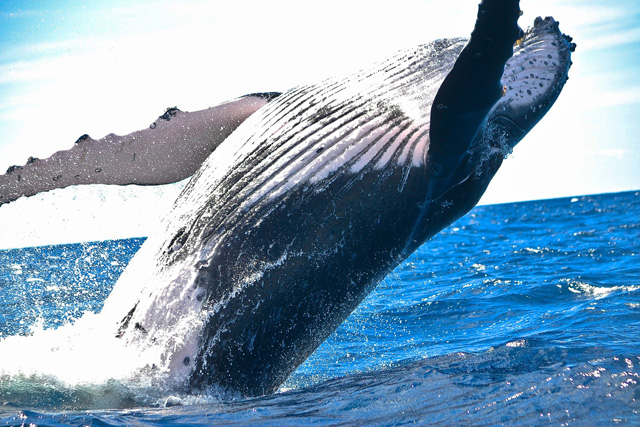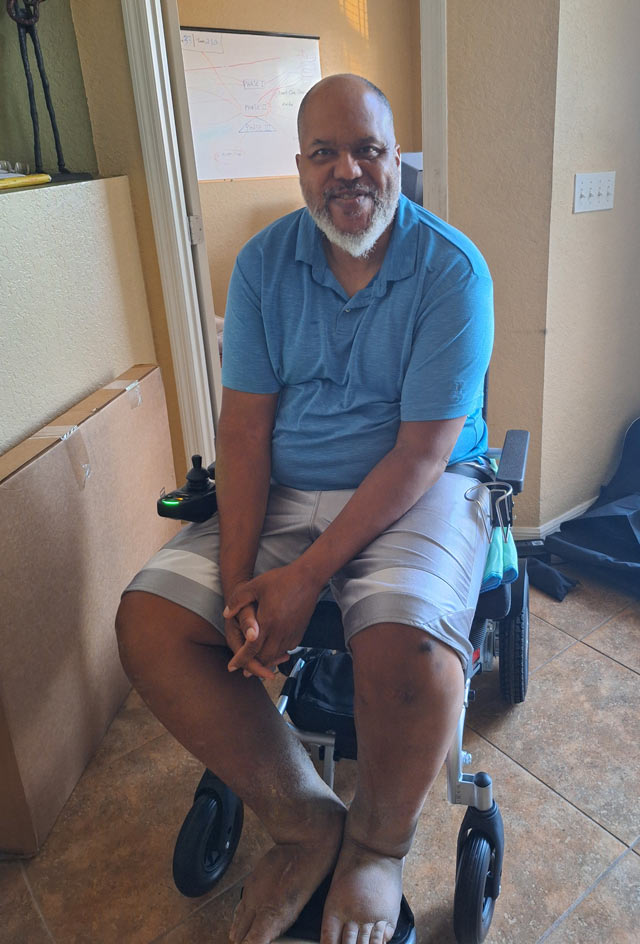Aloha, fellow whale enthusiasts! Maui, known as the “Valley Isle,” is one of the world’s best places to experience the majesty of whales.
Humpback whales are Maui’s primary visitor. Every year, these incredible giants migrate to the warm waters around Hawaii to mate, give birth, and nurture their calves.
In this guide, I’ll share everything you need to know to make the most of your whale watching adventure in Maui, from the best times to visit to insider tips for spotting whales like a pro. Let’s dive in!

Key Takeaways
- The peak whale watching season in Maui is from January to March, though sightings can occur from November to May. Early mornings and late afternoons are ideal for spotting whales.
- Consider factors like eco-friendliness, family-friendliness, and the size of the boat when selecting a tour. Look for tours with knowledgeable crews and marine naturalists.
- Maui offers ADA-compliant tours with accessible boats and trained crews to ensure an inclusive experience for people with disabilities.
- Pack light layers, sunscreen, a hat, sunglasses, a reusable water bottle, motion sickness remedies, binoculars, and a camera with a zoom lens. Leave bulky items and single-use plastics at home.
- Learn to recognize common behaviors like breaching, spouting, tail slapping, spy hopping, and pectoral fin slapping to enhance your whale watching experience.
- Choose eco-friendly tours, reduce plastic waste, and support local organizations dedicated to protecting Maui’s marine environment.
When is the Best Time for Whale Watching in Maui?
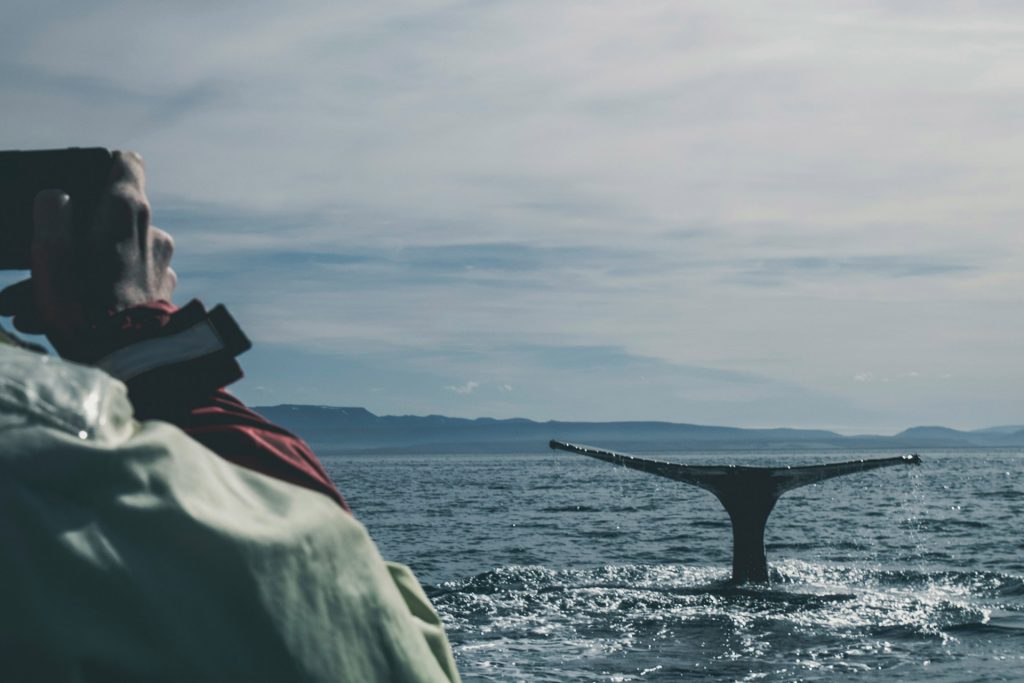
The prime season for whale watching in Maui typically extends from November to May, with the peak season occurring between January and March. During these months, humpback whales migrate to the warm Hawaiian waters to breed, calve, and nurse their young. This annual migration results in a significant increase in whale sightings, making it an ideal time to embark on a whale watching in Maui adventure.
Whale watching in Maui during the peak season offers the highest chances of encountering these magnificent creatures. You can expect to witness a variety of behaviors, including breaching, as the whales engage in courtship displays, nurture their calves, and socialize.
Early morning and late afternoon tours are generally considered the most ideal times for whale watching in Maui. Whales tend to be more active during these cooler parts of the day, increasing the likelihood of sightings and providing a more enriching experience.
By planning your whale watching in Maui adventure during the peak season and opting for tours during the early morning or late afternoon, you can significantly increase your chances of witnessing these incredible marine mammals in their natural habitat.
Fun Fact!
Did you know humpback whales travel over 3,000 miles from Alaska to Hawaii every year? That’s like running 115 marathons!
Top Whale Watching Spots in Maui

The west coast is prime territory for whale watching in Maui. Here are the best spots to start your adventure:
- Lahaina Harbor: A hub for many whale watching tours.
- Ma‘alaea Bay: Known for its calm waters and frequent sightings.
- Kaanapali Beach: Offers shoreline views and kayaking opportunities.
- Kapalua Bay: Perfect for snorkeling and occasional whale sightings.
Fun Fact!
Humpback whales often breach—leaping out of the water and landing with a splash—to communicate or remove barnacles from their skin.
Choosing a Whale Watching Tour
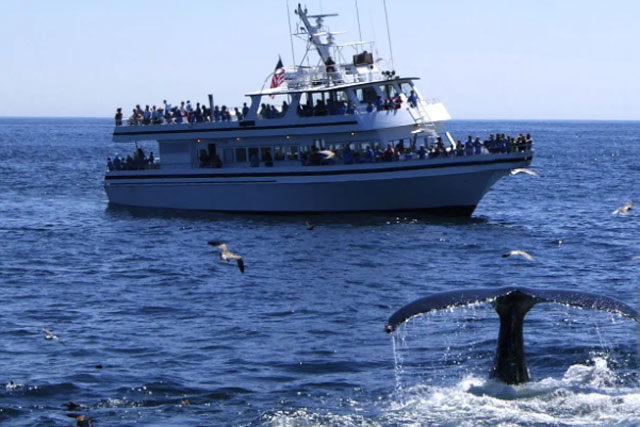
There’s a variety of tours for whale watching in Maui that can suit different preferences. I’ll share three types you may want to consider:
- Eco-Friendly Tours: These focus on minimizing environmental impact while educating guests about marine conservation.
- Family-Friendly Tours: Designed with kids in mind, these tours often include interactive activities and shorter trips.
- Exclusive Tours: For a more intimate experience with smaller boats and fewer passengers.
When selecting a tour for whale watching in Maui, consider factors such as the size of the boat, the knowledge of the crew, and the amenities provided. Smaller boats offer a more personal experience but may be less stable in choppy waters. Larger boats, on the other hand, are more stable and often include additional features like restrooms and viewing decks.
Consider Timing
Morning tours often have calmer seas, while afternoon trips may offer better lighting for photography.
Ask About Onboard Experts
Many tours include marine naturalists who share fascinating facts about whales and their environment.
Check Reviews
Online reviews can provide valuable insight into the quality of the tour.
Pro Tip!
Look for tours that employ marine naturalists to enhance your understanding of whale behaviors and conservation efforts.
ADA Whale Watching
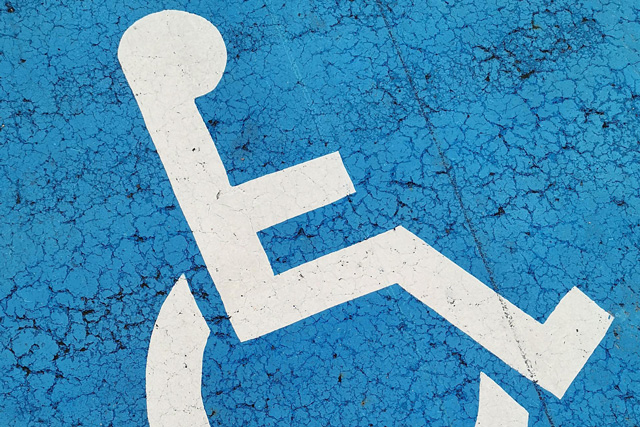
Exploring the wonders of whale watching in Maui should be an experience that everyone can enjoy, including those with disabilities. Maui offers several ADA-compliant options to ensure that all visitors have a safe, comfortable, and memorable experience on the water.

Accessible Boats
Many tour operators provide boats equipped with ADA-compliant features such as wide ramps, accessible restrooms, and spaces designed to accommodate wheelchairs or other mobility aids. These boats are designed to ensure everyone has a clear view of the action without limitations.
Helpful Crew
The crews on ADA-friendly tours are trained to assist individuals with various needs. They can help with boarding, finding accessible seating, and providing additional support throughout the trip.
Make Arrangements
When reserving your tour, mention any specific accommodations you might need. Many companies are happy to make special arrangements to enhance your experience of whale watching in Maui.
Pro Tip!
Arrive at the harbor early to ensure a smooth boarding process and to give yourself time to get familiar with the setup.
Land-Based Whale Watching Options
If you prefer to stay on land, Maui offers excellent shore-based whale watching spots, such as Kaanapali Beach or the lookout points along the Honoapiilani Highway. These areas are often accessible and provide a fantastic vantage point to see humpback whales breaching and playing in the water.
With these options, whale watching in Maui can truly be an inclusive experience that everyone can cherish.
Whale Watching in Maui: What to Bring on a Tour
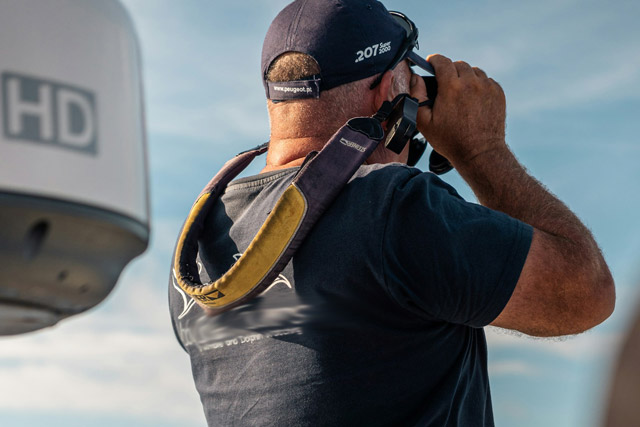
Preparation is key to making your whale watching tour in Maui enjoyable and stress-free. Packing the right items ensures that you stay comfortable, safe, and ready to capture all the magical moments. Here’s an expanded list of essentials to bring:
Clothing and Accessories
- Light Jacket or Windbreaker: It can get cool and breezy on the water, especially during morning tours. A light jacket helps keep you comfortable without being bulky.
- Wide-Brim Hat or Cap: Protect your face and neck from the tropical sun while keeping your vision clear.
- Sunglasses with UV Protection: Polarized sunglasses are ideal as they reduce glare on the water, making it easier to spot whales.
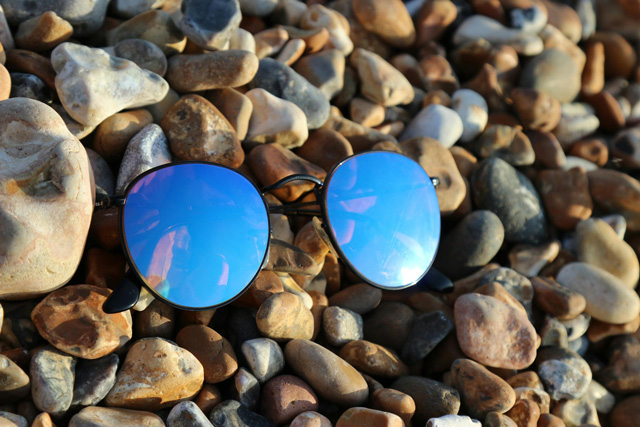
Essentials for Comfort and Safety
- Sunscreen: Choose a reef-safe sunscreen to protect your skin and Maui’s coral reefs. Apply generously and reapply throughout the day.
- Reusable Water Bottle: Stay hydrated under the Hawaiian sun. Many tours offer water refill stations, so bring a bottle to minimize plastic waste.
- Motion Sickness Remedies: Even if you don’t typically get seasick, the motion of the boat can surprise you. Ginger candies, motion sickness wristbands, or over-the-counter medications like Dramamine can be lifesavers.
Pro Tip!
Take motion sickness medication at least an hour before your tour to give it time to work.
Gear for Whale Spotting
- Binoculars: A good pair of binoculars helps you get a closer look at the whales, even from a distance.
- Camera with a Zoom Lens: Capture stunning photos of whale breaches, tail slaps, and more. If your camera allows, consider bringing a waterproof case or strap for added security.
- Smartphone with a Waterproof Case: Smartphones are great for photos and videos, and a waterproof case ensures they stay safe from splashes.
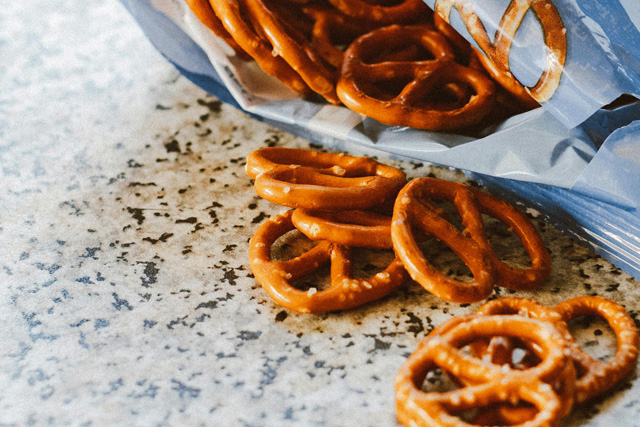
Extras for a Better Experience
- Snacks: Check with your tour operator if food is allowed onboard. Granola bars, dried fruit, or nuts are great energy boosters.
- Notebook or Journal: Jot down your observations, fun facts, or even sketch the whales you see to remember the experience.
- Tote Bag: Use an eco-friendly tote to carry all your essentials. It’s lightweight and keeps everything organized.
- Waterproof Dry Bag: Protect valuables like phones, wallets, and cameras from accidental splashes or spills.
Fun Fact!
The Hawaiian sun is stronger than you might think! Sunscreen, sunglasses, and hydration are your best friends for a full day on the water.
What to Leave at Home
- Single-Use Plastics: Maui is committed to reducing plastic waste. Avoid plastic water bottles or bags.
- Bulky Backpacks: Stick to lightweight bags that are easy to store on a boat.
- Expensive Jewelry or Unnecessary Valuables: Keep it simple to avoid any risk of losing precious items.
What Happens During a Whale Watching Tour in Maui
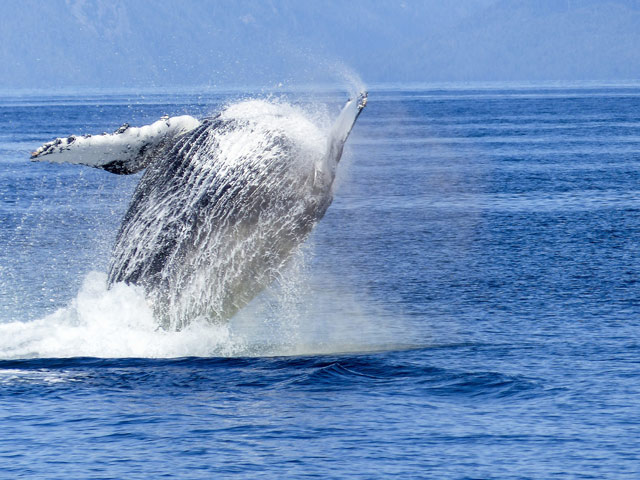
Embarking on a tour for whale watching in Maui is an unforgettable adventure filled with excitement, learning, and awe. Here’s what you can expect during your journey:
Welcome Aboard
Your tour will typically start at a bustling harbor like Lahaina or Ma‘alaea, where you’ll meet your crew and fellow passengers. After a brief introduction and safety overview, you’ll board your vessel—anything from a spacious catamaran to a smaller, intimate boat.
Setting Sail
As the boat leaves the harbor, you’ll enjoy stunning views of Maui’s coastline and the neighboring islands. Keep your camera ready; you might spot other marine life like sea turtles or dolphins on your way to the prime whale watching areas.
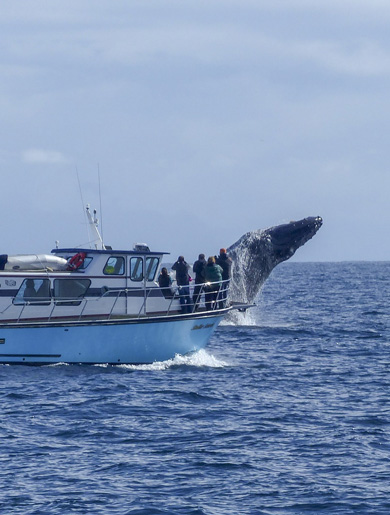
Whale Sightings
Once you’re in whale territory, the excitement truly begins! Watch for spouts of water in the distance, signaling the presence of whales. The crew will help you identify behaviors like breaches, tail slaps, and spy hopping. Many tours also use hydrophones to let you hear the haunting songs of humpback whales beneath the waves.
Educational Insights
Most tours include a marine naturalist who shares fascinating facts about humpback whales, their migration, and their behaviors. This educational component adds depth to your experience and fosters a greater appreciation for these incredible creatures.
Heading Back to Port
As your tour concludes, you’ll likely feel a mix of exhilaration and peace. Many operators take a scenic route back to the harbor, giving you time to reflect on the magical experience and snap a few final photos.
Every tour is unique, so expect surprises, whether it’s a mother teaching her calf to breach or a curious whale swimming close to your boat. Whale watching in Maui is truly an experience like no other!
Whale Watching in Maui Safety Tips

Your safety and the protection of Maui’s marine life go hand-in-hand during a whale watching tour. To ensure a safe and enjoyable experience, keep these tips in mind:
Follow the Crew’s Instructions
The boat crew are trained professionals with experience navigating Maui’s waters and understanding whale behavior. Always listen to their instructions, whether it’s about staying seated, moving around the boat, or approaching certain areas.
Stay Seated When the Boat is Moving
While it might be tempting to stand for a better view, staying seated when the boat is in motion minimizes the risk of slipping or losing balance due to sudden waves.
Respect the Whales’ Space
Federal guidelines prohibit boats from approaching whales closer than 100 yards. Maintaining this distance ensures the whales are not disturbed while allowing you to observe their natural behaviors.
Stay Hydrated and Protected
Spending hours on the water under the Hawaiian sun can lead to dehydration or sunburn. Bring a reusable water bottle, wear sunscreen, and dress appropriately with a hat and sunglasses.
Pro Tip!
Pack a lightweight rain poncho just in case the weather changes unexpectedly.
Avoid Leaning Over the Rails
It might seem like a better way to catch a glimpse of the whales, but leaning over the rails can be dangerous, especially in choppy waters. Stay safely within designated viewing areas.
Secure Your Belongings
The excitement of seeing a breaching whale can cause accidental spills or drops. Use a waterproof bag or strap for cameras, phones, and other valuables to ensure they stay safe.
Fun Fact!
The Hawaiian Islands Humpback Whale National Marine Sanctuary, where many whale watching in Maui tours operate, spans over 1,400 square miles and is dedicated to protecting these magnificent creatures.
Teach Kids About Safety
If you’re traveling with children, take a moment to explain boat safety rules to them beforehand. Keeping kids engaged and aware will make the tour enjoyable for everyone.
Following the safety tips I outlined will help ensure the safety of both passengers and the whales you’re there to enjoy.
Whale Behaviors to Watch For
Whales are captivating creatures, and observing their behaviors in the wild can be a truly magical experience. Each movement and action tells a story about how these giants communicate, feed, play, and interact with their environment. Here’s a closer look at the behaviors you might witness during a tour of whale watching in Maui:

Blowing
Blowing occurs when whales surface to breathe, releasing a visible spout of mist from their blowholes. This mist is a combination of warm air and water vapor, and the height and shape of the spout can sometimes help identify the species.
- What to Look For: Humpback whales produce a tall, bushy spout that’s easy to spot from a distance.
- Why It’s Important: Blowing gives you a heads-up that whales are nearby, even before you see their bodies.
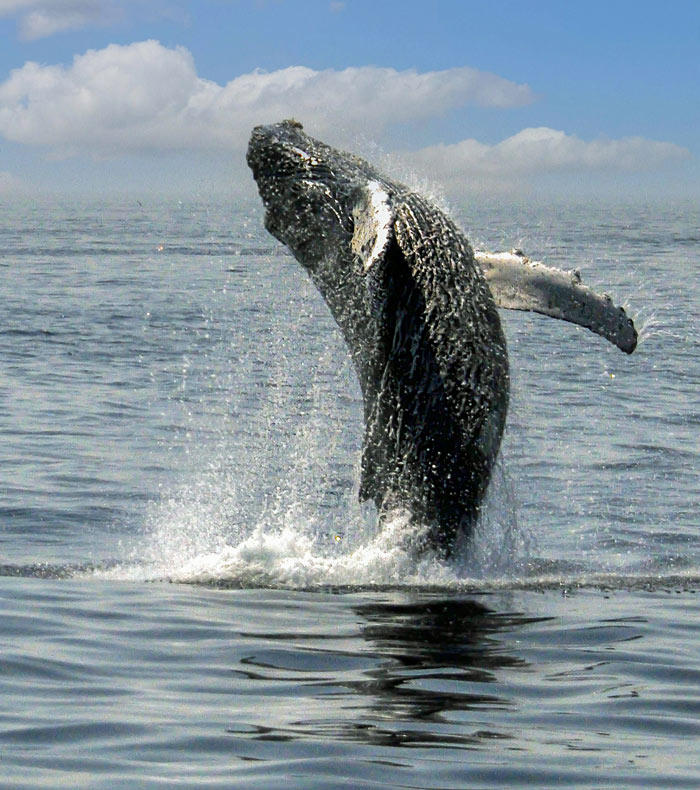
Breaching
Breaching is one of the most dramatic whale behaviors. The whale propels itself out of the water, often twisting mid-air before crashing back down with a spectacular splash.
- Why They Do It: Scientists believe breaching helps communicate with other whales, remove parasites, or simply play.
- What Makes It Special: It’s a breathtaking sight that leaves everyone on board cheering.
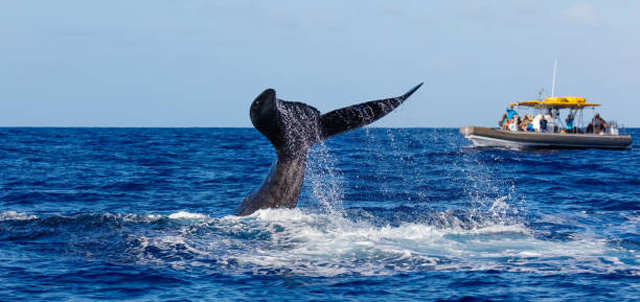
Tail Slapping
Also known as “lobtailing,” this behavior involves a whale repeatedly slapping its tail on the water’s surface. The sound created can travel long distances underwater.
- Possible Reasons: Tail slapping may signal aggression, playfulness, or a way to communicate with other whales.
- What to Watch: The rhythmic slapping creates a splash that’s easy to spot and hear.
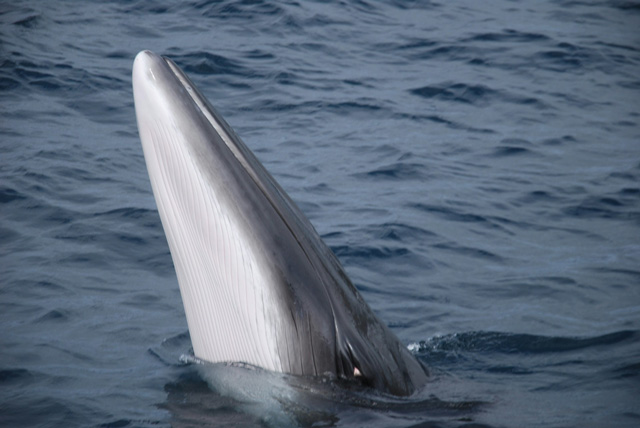
Spy Hopping
When a whale rises vertically out of the water and pauses with its head above the surface, it’s called spy hopping. This behavior allows the whale to observe its surroundings.
- Why It’s Fascinating: It’s as if the whale is taking a moment to “people-watch” or look at boats, adding a layer of curiosity to their personality.
- Great Photo Opportunity: Spy hopping often results in fantastic pictures of the whale’s head and eyes.

Pectoral Fin Slapping
Humpbacks have long pectoral fins, and they sometimes slap them on the water’s surface. This behavior is called “pec slapping.”
- Possible Reasons: It could be a way of communicating, playing, or warding off threats.
- What Makes It Unique: The size of their fins—up to one-third of their body length—makes this behavior particularly dramatic.
Pro Tip!
Keep your camera ready when you see pectoral fin slapping—it’s a rare and exciting moment to capture!
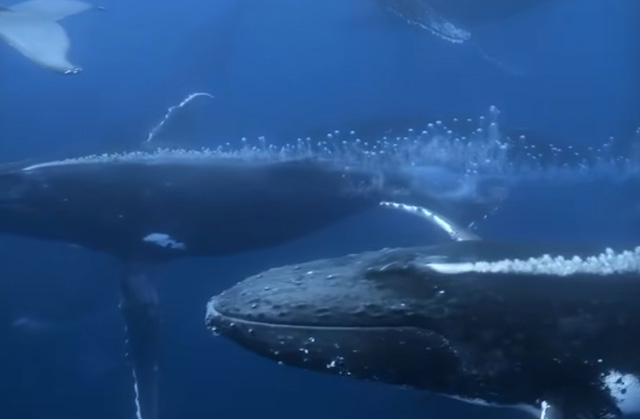
Bubble Net Feeding
Although rare in Maui, bubble net feeding is a unique group hunting behavior. A pod of whales creates a circular “net” of bubbles to trap fish, then rises to the surface with mouths wide open to feed.
- Why It’s Rare: Humpbacks in Hawaii don’t feed while in their breeding grounds, as they rely on fat reserves built in Alaska.
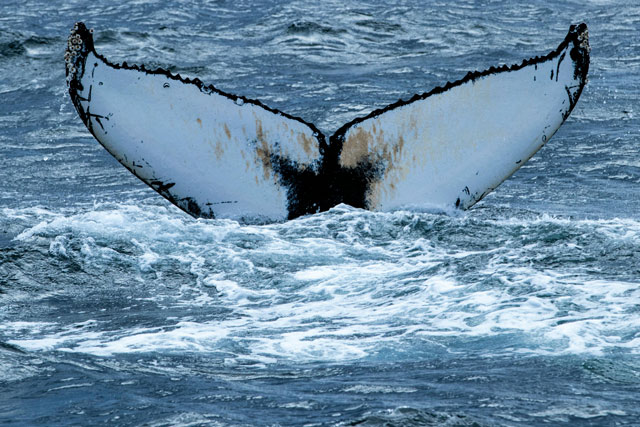
Fluking
Fluking is when a whale dives deep, and its tail (fluke) comes out of the water. The sight of a fluke often marks the end of a surfacing sequence.
- What It Signifies: A whale is preparing for a deeper dive, often lasting several minutes.
- What to Look For: The unique patterns on the underside of a humpback’s tail can help identify individual whales.
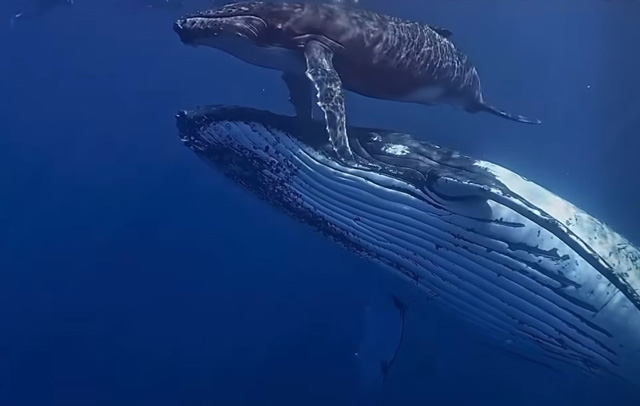
Swimming with Calves
Mothers and their calves are often seen swimming together. Calves stay close to their mothers for protection and frequent nursing.
What to Notice: Watch for the smaller calf mimicking its mother’s movements—it’s an adorable and heartwarming sight.
Most Common Whales Seen During Whale Watching in Maui
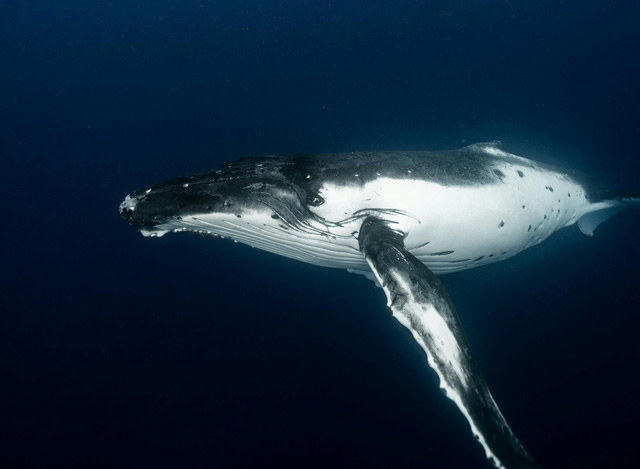
Humpback Whale
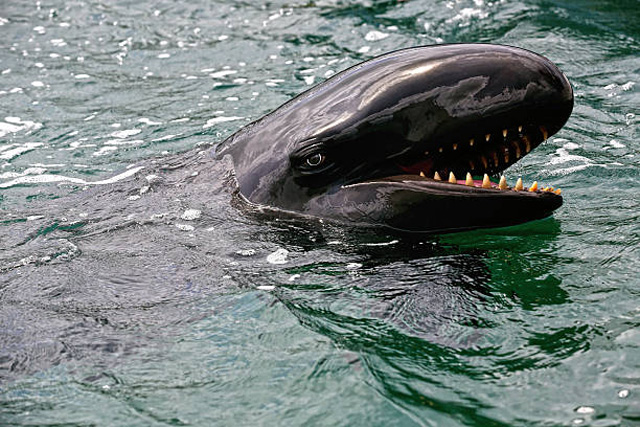
False Killer Whale
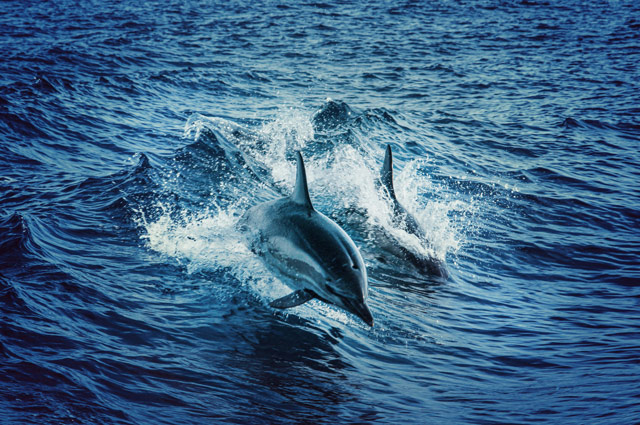
Spinner Dolphin
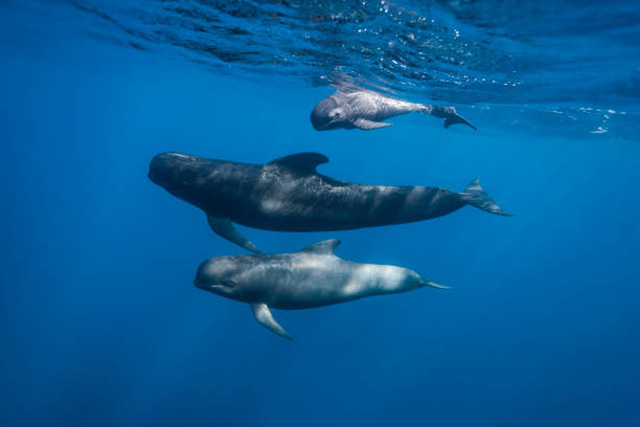
Pilot Whale
Maui’s waters are home to a variety of whale species. Here are some brief descriptions I put together for you of the most common ones you might encounter while whale watching in Maui:
- Humpback Whales: These are the stars of Maui’s whale watching season. They can grow up to 60 feet long and weigh as much as 40 tons. Humpbacks are known for their playful behaviors like breaching and tail-slapping. They primarily feed on krill and small fish during their time in colder waters.
- False Killer Whales: Despite their name, these marine mammals are actually part of the dolphin family. They reach lengths of up to 20 feet and are often seen in pods. False killer whales feed on squid and large fish.
- Spinner Dolphins: While not whales, these energetic dolphins are frequently spotted during tours. They’re smaller, reaching up to 7 feet in length, and are famous for their acrobatic spins out of the water. Their diet consists mainly of small fish and squid.
- Pilot Whales: These medium-sized whales can grow up to 25 feet long. They have a distinctive bulbous head and are social creatures, often traveling in pods. Pilot whales primarily eat squid and other cephalopods.
Why Whales Congregate in Maui During Whale Watching Season
One of the most fascinating aspects of whale watching in Maui is understanding why these amazing animals choose this specific region for a part of their life cycle. Humpback whales, the stars of Maui’s whale watching season, travel thousands of miles from the cold, nutrient-rich waters of Alaska to the warm, tropical waters of Hawaii. But what draws them here?
The Warm, Shallow Waters of Maui
Maui’s warm, shallow waters provide the perfect environment for humpback whales to mate, give birth, and nurse their young. These conditions offer a safe haven, as the lack of natural predators like orcas and the calm waters are ideal for newborn calves.
- Physical Protection: Shallow waters make it harder for predators to access the young whales.
- Comfortable Temperatures: Warm water helps calves conserve energy, critical for their growth and survival.
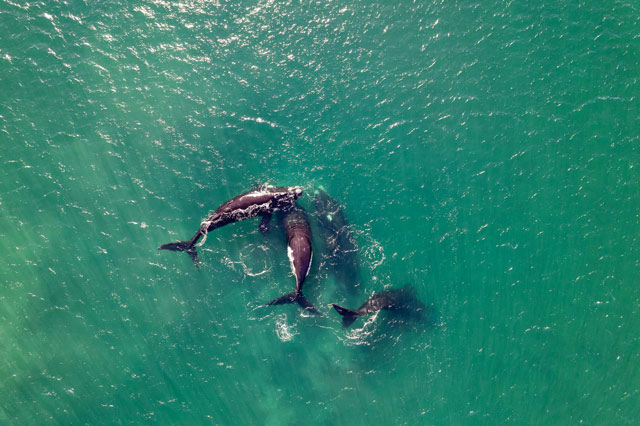
A Sanctuary for Reproduction and Bonding
Humpbacks don’t feed during their stay in Hawaii; instead, they rely on fat reserves built up during summer feeding in the colder waters around northern Canada and Alaska. There time in Maui is dedicated to reproduction and nurturing their young.
- Courtship and Mating: Males sing complex songs to attract females, creating an auditory experience unique to Maui’s waters.
- Calf Rearing: Newborn calves, typically 10–15 feet long and weighing up to 2,000 pounds, learn vital skills, including swimming and surfacing for air, from their mothers.
Maui’s Geography is Key
The geography of Maui plays a significant role in attracting humpback whales. The channels between Maui, Molokai, Lanai, and Kahoolawe islands form the “Maui Nui Basin.” This area is a designated sanctuary, offering whales protection from human threats and providing a calm, nurturing space.
- Protected Marine Areas: The Hawaiian Islands Humpback Whale National Marine Sanctuary ensures minimal disturbance for these gentle giants.
- Ideal Depths: The basin features shallow depths ranging from 100 to 600 feet, perfect for whale behaviors like breaching and spy hopping.
Fun Fact!
Humpback whales lose up to one-third of their body weight during their stay in Maui because they focus solely on mating and birthing, without feeding.
Understanding why whales congregate in Maui enhances your whale watching experience, as it highlights the deep connection between these creatures and their environment.
Supporting Maui’s Marine Conservation Efforts
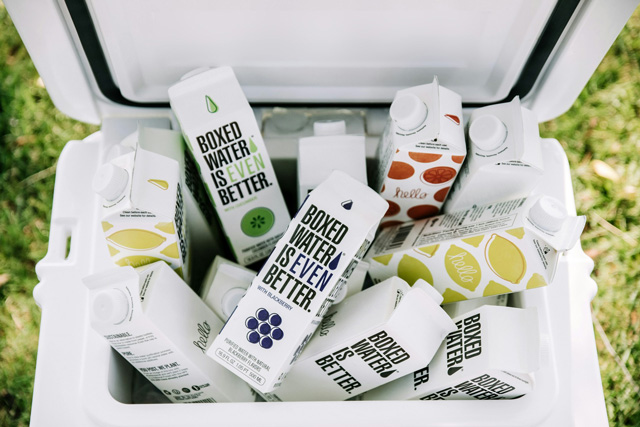
By choosing eco-friendly tours and reducing plastic use, you can help protect Maui’s marine life. Many operators contribute to local conservation programs, so your tour fee for whale watching in Maui supports efforts to preserve this fragile ecosystem.
- Support Local Initiatives: Many tour operators donate a portion of their proceeds to organizations focused on marine conservation.
- Reduce Plastic Waste: Avoid single-use plastics and bring reusable water bottles or containers.
- Participate in Cleanups: Look for community events where you can help clean Maui’s beaches and waterways.
- Learn and Advocate: Educate yourself on the challenges facing marine life and share this knowledge to inspire others to act.
You can also choose tours certified by eco-friendly organizations like:
- Hawaiian Islands Humpback Whale National Marine Sanctuary – A sanctuary dedicated to the protection of humpback whales and their habitat in Hawaii.
- Pacific Whale Foundation – A nonprofit organization focusing on marine conservation and education in Hawaii.
- NOAA (National Oceanic and Atmospheric Administration) – Plays a role in managing the sanctuary and protecting marine life.
- Maui Ocean Center Marine Institute – Engaged in research and conservation efforts for marine life in Maui.
- Sustainable Coastlines Hawaii – Focuses on beach cleanups and reducing plastic waste to protect Hawaii’s coasts.
- Hawaii Wildlife Fund – Dedicated to protecting Hawaii’s native wildlife, including marine species.
- Maui Nui Marine Resource Council – Works on restoring and protecting the marine environment of Maui County.
- Save Our Seas Foundation – An international organization that may have projects or influence in Hawaii’s marine conservation.
Conclusion
Whale watching in Maui is an unforgettable experience that combines natural beauty, education, and the thrill of seeing these magnificent creatures up close. Whether you’re a first-time visitor or a seasoned enthusiast, there’s always something new to discover in the world of whales. So pack your bags, book your tour, and prepare for an adventure of a lifetime!
